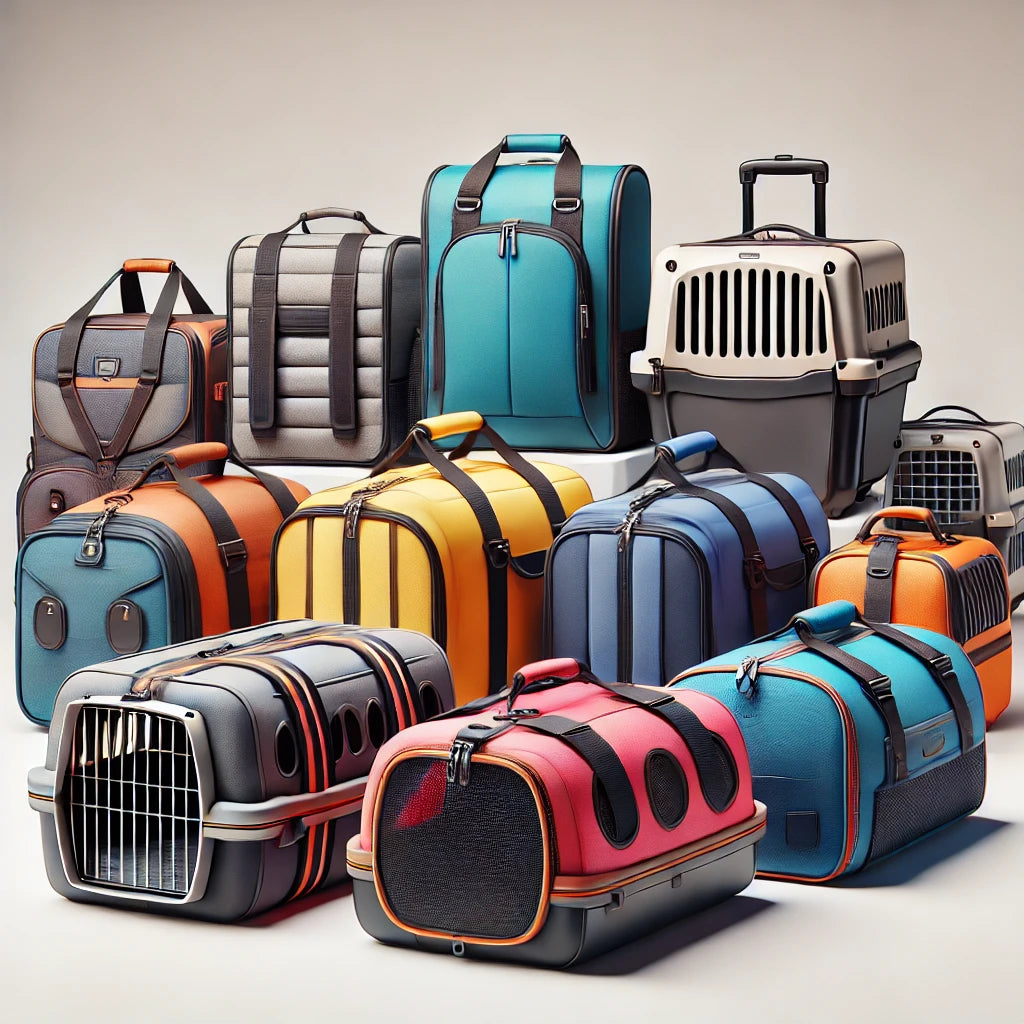
Pet Carriers: A Complete Guide to Airline-Approved Options
Share
Traveling with pets can be a joyful experience, but it comes with its challenges. Ensuring your pet’s safety, comfort, and adherence to airline guidelines is a top priority for any pet parent. This guide breaks down what airline-approved pet carriers are, how to choose the right one, and what you should know before flying. We'll also dive into FAQs to answer common questions about pet carriers and travel.
What Are Airline-Approved Pet Carriers?
Airline-approved pet carriers are specially designed bags or crates that meet the requirements set by airlines for transporting pets in the cabin or cargo area. These carriers are built to ensure your pet's comfort, safety, and security during travel.
General Requirements for Airline-Approved Pet Carriers
Most airlines have similar requirements for pet carriers. While specific guidelines can vary, here’s what to look for:
- Size: The carrier must fit under the seat in front of you (for in-cabin travel).
- Ventilation: It should have ample ventilation on multiple sides for proper airflow.
- Material: Must be made of durable and secure materials like hard plastic, soft fabric, or a combination of both.
- Leak-Proof: The carrier’s base should be leak-proof to prevent spills.
- Secure Closures: Zippers or locks must ensure the carrier is escape-proof.
Types of Airline-Approved Pet Carriers
Soft-Sided Carriers
Soft-sided carriers are ideal for small pets like cats, small dogs, or rabbits. They are lightweight and can easily fit under the seat in front of you. Popular brands include:
- Sherpa Original Deluxe Carrier
- AmazonBasics Soft-Sided Carrier
Hard-Sided Carriers
Hard-sided carriers are sturdy and provide extra protection. They’re better suited for medium to larger pets or pets that are likely to scratch or chew. Some popular options include:
- Petmate Sky Kennel
- Aspen Pet Traditional Carrier
Expandable Carriers
Expandable carriers are a great choice for pets who need a bit more room to stretch out. They have panels that can be extended once you’re at the airport. Examples include:
- Mr. Peanut’s Expandable Pet Carrier
- Petsfit Expandable Travel Carrier
How to Choose the Right Pet Carrier
1. Measure Your Pet
Start by measuring your pet's height, length, and weight. Compare these dimensions with the carrier's specifications to ensure it’s a snug yet comfortable fit.
2. Check Airline Policies
Each airline has its own pet travel policies. Double-check these before booking your flight to ensure your chosen carrier complies with their rules.
3. Consider Your Pet’s Behavior
Does your pet get anxious, chew, or scratch? Choose a carrier based on their temperament. Hard-sided carriers are great for nervous chewers, while soft-sided ones work well for calmer pets.
Preparing Your Pet for Travel
1. Introduce the Carrier Early
Leave the carrier open at home so your pet can explore and get comfortable with it before travel day.
2. Add Familiar Items
Place your pet's favorite blanket or toy in the carrier to provide comfort and reduce anxiety.
3. Practice Short Trips
Take your pet on short car rides in their carrier to help them adjust to being confined.
Airline Policies on Pet Carriers
Here are some general airline policies regarding pet carriers:
- American Airlines: The carrier must fit under the seat with maximum dimensions of 19 x 13 x 9 inches.
- Delta Airlines: Soft-sided carriers are preferred for in-cabin travel, with size limits of 18 x 11 x 11 inches.
- United Airlines: Allows carriers up to 18 x 11 x 11 inches. They must be leak-proof and well-ventilated.
Always verify your airline's latest pet travel guidelines before booking your flight.
Top Airline-Approved Pet Carriers
1. Sherpa Travel Original Deluxe Carrier
- Features: Soft-sided, durable, and airline-approved.
- Best For: Small pets like cats and tiny dogs.
- Price Range: $50-$75.
2. Petmate Sky Kennel
- Features: Hard-sided, suitable for cargo travel.
- Best For: Medium to large pets.
- Price Range: $75-$150.
3. Sleepypod Air In-Cabin Pet Carrier
- Features: High-quality materials with extra comfort.
- Best For: Small pets who need extra cushioning.
- Price Range: $150-$200.
Travel Tips for Flying with a Pet
- Book Early: Airlines often have a limited number of spots for pets in the cabin.
- Arrive Early: Check in at least two hours before your flight to allow time for pet processing.
- Feed Your Pet Early: Feed your pet 4-6 hours before the flight to prevent motion sickness.
- Exercise Beforehand: Give your pet plenty of exercise to help them relax during the journey.
Conclusion
Choosing the right airline-approved pet carrier is essential for a stress-free travel experience. With the right preparation and carrier, you can ensure your pet stays safe and comfortable throughout the journey. Don’t forget to double-check airline policies and take the time to familiarize your pet with their carrier before travel day.
Ready to find the perfect carrier? Explore our top recommendations and make your next trip with your pet a smooth one!
FAQs
1. Can I use any pet carrier for air travel?
No, not all carriers are airline-approved. Check the carrier's label or product description to confirm it meets airline guidelines.
2. What is the maximum size for an in-cabin pet carrier?
Most airlines allow carriers with maximum dimensions of 18 x 11 x 11 inches. Always confirm with your airline before flying.
3. Are soft-sided carriers better than hard-sided ones?
It depends on your pet’s size and temperament. Soft-sided carriers are ideal for small, calm pets, while hard-sided ones offer better protection for larger or more active pets.
4. Do I need to sedate my pet before flying?
Most veterinarians advise against sedation as it can interfere with your pet’s ability to regulate their body temperature and respond to stress.